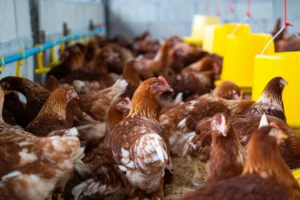The global coffee market has entered a period of extraordinary turbulence in 2025, with prices experiencing dramatic fluctuations that have sent shockwaves through the entire supply chain. Since January, coffee prices have surged by an unprecedented 16.55%, creating significant challenges for everyone from small-scale farmers to multinational coffee retailers. This volatility stems from a complex interplay of factors, with climate change impacts and geopolitical tensions emerging as the primary drivers reshaping the market landscape. For an industry already characterized by historical price instability, the current situation represents an exceptional convergence of disruptive forces that are testing the resilience of global coffee trade networks.
Climate change has moved from a theoretical concern to a present-day crisis for coffee production, with extreme weather events devastating key growing regions with increasing frequency and severity. In Brazil, the world’s largest coffee producer, prolonged drought conditions throughout the critical flowering period have significantly reduced yield projections for the 2025/26 harvest. Agricultural authorities in Brazil’s coffee belt report rainfall deficits of 30-40% below historical averages, with some regions experiencing the driest conditions in over three decades. Similarly, Vietnam, the second-largest global producer and dominant supplier of robusta beans, has faced destructive flooding in its central highlands, damaging both current crops and infrastructure essential for processing and transportation.
Beyond these immediate climate challenges, geopolitical tensions have added another layer of complexity to the coffee market in 2025. Trade disputes between major consuming and producing nations, currency volatility in key coffee-exporting countries, and increasing competition for shipping capacity amid global supply chain pressures have all contributed to market uncertainty. The resulting price volatility has exposed vulnerabilities throughout the coffee value chain, prompting urgent reassessments of sourcing strategies, inventory management practices, and risk mitigation approaches among industry participants worldwide.
Climate Change: Transforming Coffee’s Geographic Landscape
The impact of climate change on coffee production extends far beyond temporary weather disruptions, potentially altering the very geography of global coffee cultivation. Research from the International Coffee Organization indicates that by 2025, approximately 50% of land currently suitable for arabica coffee production could become climatically unsuitable by mid-century without significant adaptation measures. This existential threat is already manifesting in shifting production patterns, with traditional lower-elevation growing areas experiencing declining yields and quality issues as temperatures rise and rainfall patterns become increasingly erratic.
In Colombia, the world’s third-largest coffee producer and a source of premium arabica beans, farmers in lower-altitude regions report increasing challenges with coffee berry borer infestations and coffee leaf rust disease, both exacerbated by warming temperatures. Many producers have begun migrating their plantations to higher elevations where possible, though such adaptation strategies involve significant costs and multi-year transition periods before new plantings reach full productivity. Similar elevation shifts are occurring in Central American producing countries, where smallholder farmers with limited resources face particularly difficult adaptation challenges.
The climate crisis is also driving research into more resilient coffee varieties, with both public institutions and private companies investing in developing beans that can withstand higher temperatures, increased pest pressure, and irregular rainfall. However, the coffee plant’s biological characteristics mean that breeding new varieties is a lengthy process, typically requiring 5-10 years of development and testing before commercial release. This timeline creates a critical gap between the pace of climate change and the industry’s ability to adapt through varietal innovation alone.
Geopolitical Tensions and Market Disruptions
While climate change represents a fundamental long-term challenge to coffee production, more immediate market volatility in 2025 has been amplified by various geopolitical factors. Trade relations between the United States and Brazil, traditionally strong coffee trading partners, have become increasingly strained following the implementation of new environmental certification requirements for agricultural imports. Brazilian officials have characterized these measures as disguised trade barriers, while U.S. authorities maintain they represent necessary environmental safeguards. The resulting diplomatic tensions have created uncertainty in trading relationships that have historically provided stability to the global coffee market.
Currency volatility has further complicated the market landscape. The Brazilian real has experienced fluctuations of over 15% against the U.S. dollar in the first quarter of 2025 alone, creating significant challenges for price forecasting and contract negotiations. Similarly, political instability in Ethiopia, Africa’s largest coffee producer and the birthplace of arabica coffee, has contributed to a 25% depreciation of the Ethiopian birr, dramatically altering the economics of coffee exports from this historically significant origin.
Adding to these challenges, global shipping and logistics networks continue to face disruptions in 2025. The ongoing conflict in the Red Sea has forced vessels to take longer routes between Asia and Europe, increasing shipping times and costs for coffee moving from East African and Asian origins to European markets. Container availability remains inconsistent across major coffee exporting ports, with logistics experts reporting average delays of 12-18 days for coffee shipments compared to pre-pandemic schedules. These logistical challenges have forced buyers to maintain larger inventory buffers and longer planning horizons, fundamentally changing traditional just-in-time supply chain approaches.
Market Responses and Adaptation Strategies
In response to these unprecedented challenges, the coffee industry is implementing various adaptation strategies throughout the value chain. Large roasters and coffee retailers have significantly expanded their direct sourcing programs, establishing closer relationships with producers to secure supply and support climate resilience initiatives at farm level. Companies including Starbucks, Nestlé, and JDE Peet’s have all announced expanded sustainability commitments in 2025, with investments in climate-smart agricultural practices, water management systems, and shade tree planting programs in vulnerable growing regions.
Financial innovation is also playing an increasingly important role in managing coffee market volatility. New parametric insurance products designed specifically for coffee farmers have gained traction, offering protection against specific climate risks such as rainfall deficits or excessive heat during critical growing periods. These insurance mechanisms, often supported by satellite data and weather monitoring systems, provide more responsive protection than traditional crop insurance and are increasingly being bundled with financing packages for farm improvements.
For coffee traders and importers, diversification has become a central risk management strategy. Companies that historically focused on specific origins or qualities are rapidly expanding their sourcing networks, developing relationships with producers across a wider geographic range to reduce vulnerability to localized disruptions. This diversification extends to contract structures as well, with many buyers implementing portfolio approaches that balance long-term fixed-price agreements, shorter-term flexible contracts, and spot market purchases to manage price risk.
Technology and Transparency Initiatives
Technological innovation is emerging as a critical tool for addressing coffee market challenges in 2025. Blockchain-based traceability systems have gained significant adoption, allowing more transparent tracking of coffee from farm to cup. These systems not only support sustainability claims but also enable more efficient supply chain management and faster identification of potential disruption points. Major coffee companies report that implementation of end-to-end traceability systems has reduced supply chain reaction times by 30-40% when disruptions occur, allowing more agile responses to rapidly changing market conditions.
Satellite monitoring and remote sensing technologies are similarly transforming how production forecasts are developed. Private agricultural intelligence firms now offer subscription services providing near real-time assessment of coffee flowering, development, and potential yield across major producing regions. These technologies, combined with artificial intelligence analysis of weather patterns, social media activity, and logistics data, are creating more sophisticated early warning systems for potential supply disruptions, though the predictive accuracy of these systems continues to vary significantly.
For producers, mobile technology has become an increasingly important tool for accessing market information and technical support. Farmer-focused applications providing weather alerts, pest management guidance, and direct market connections have seen adoption rates increase by over 60% since 2023 in countries including Colombia, Kenya, and Vietnam. These digital tools, while not solving fundamental climate and market challenges, help reduce information asymmetries that have historically disadvantaged producers in volatile market conditions.
Long-term Outlook and Strategic Considerations
Looking beyond immediate market volatility, the coffee industry faces profound questions about its long-term structure and sustainability. Climate projections suggest that without significant adaptation measures, traditional coffee-growing regions may face existential threats over the coming decades. This reality is driving increased interest in alternative production models, including controlled-environment cultivation systems that could potentially reduce climate vulnerability, though such approaches remain economically viable only for specialty market segments due to their high investment and operating costs.
Consumer markets are simultaneously evolving in response to both price pressures and sustainability concerns. Market research indicates that while overall coffee consumption remains relatively price inelastic, significant shifts are occurring between product categories as consumers adapt to higher retail prices. Premium single-origin offerings have seen sales decline by approximately 8% in the first quarter of 2025 compared to the previous year, while more affordable blended products have gained market share. This trend creates additional challenges for specialty producers already facing climate-related quality issues.
For industry participants throughout the value chain, the current market volatility underscores the importance of building more resilient and adaptive business models. Companies with strong risk management practices, diversified supply networks, and the ability to quickly respond to changing market conditions will be best positioned to navigate the continuing uncertainty that characterizes the 2025 coffee landscape.
Navigating Coffee Market Complexity with Expert Partners
In this environment of unprecedented coffee market volatility, having knowledgeable and experienced trading partners has never been more valuable. Despite the extraordinary challenges facing the global coffee industry in 2025, Sax Trading continues to provide reliable sourcing solutions through its extensive network of relationships across all major producing regions. By leveraging decades of market expertise and maintaining direct connections with producers, cooperatives, and exporters, Sax Trading has successfully maintained supply continuity for clients even as traditional market patterns face disruption.
Whether you’re a specialty roaster seeking premium single-origin beans, a commercial coffee manufacturer requiring consistent blending components, or a retailer developing private label offerings, today’s complex market demands strategic sourcing partnerships. Sax Trading’s coffee specialists understand the unique challenges of the current environment and can help you develop customized procurement strategies that balance quality requirements, price considerations, and supply security.
Contact Sax Trading today for a free consultation and discover how our expertise in global coffee markets can help your business thrive despite current volatility. Our team will analyze your specific requirements and develop tailored solutions that ensure your coffee supply remains reliable and competitive in this challenging market landscape.








